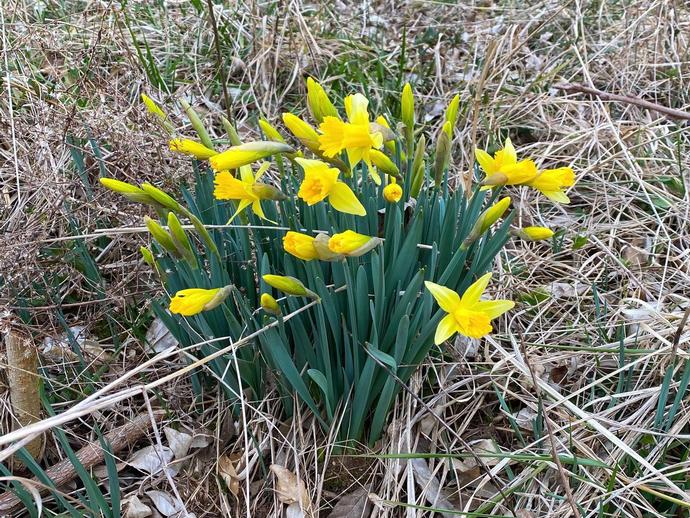March 11, 2021
Ben here with today's edition of #BenInNature presented by our friends at Carter Bank & Trust!
Nothing signals spring's imminent arrival quite like seeing daffodils beginning to bloom, sometimes while there's still snow on the ground! Daffodils belong to the genus Narcissus, and there are at least 50 different species of these beautiful flowers.
Daffodils aren't native to the U.S.; they're actually native to southern Europe and northern Africa, but they have been spread across the world over the course of centuries. They thrive in USDA hardiness zones 3B through 10, which covers most of the U.S. and Canada, which is why they're so ubiquitous here in the States.
Daffodils generally sprout and bloom in late winter and early spring, and come summer, they appear to die off. The bulbs go into a dormant state that helps conserve moisture and allows the bulbs to survive the winter to come. In fact, exposure to cold weather is necessary for daffodils to bloom the following spring; the switch from cold weather to warmer spring temperatures is what triggers the bulb to sprout and bloom.
While daffodils are sometimes used in traditional medicine, it's best to avoid ingesting any part of the plant. Daffodils contain an alkaloid poison called lycorine which is contained in the bulb and leaves. There have been instances of people eating daffodil bulbs after mistaking them for leeks or onions; the taste is foul enough that people usually stop before they've ingested a truly harmful dose, but a large enough amount of lycorine can cause convulsions, paralysis, and even death. As delicious as these flowers may look, it's best to simply admire them for their aesthetic qualities!
ABOUT #BenInNature
Social distancing can be difficult, but it presents a great opportunity to become reacquainted with nature. In this series of posts, Administrator of Science Ben Williams ventures outdoors to record a snapshot of the unique sights that can be found in the natural world. New updates are posted Monday - Friday, with previous posts highlighted on the weekends. This series of posts is made possible thanks to the support of VMNH Corporate Partner Carter Bank & Trust (www.cbtcares.com)
NATURE PHOTO IDENTIFICATIONS
If you discover something in nature that you would like help identifying, be sure to message us right here on Facebook with a picture (please include location and date of picture) and we'll have our experts help you identify it!

 Hours & Admissions
Hours & Admissions Directions
Directions

